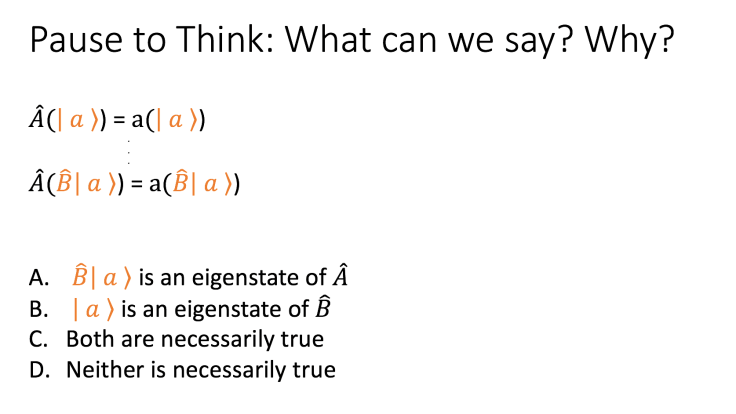I don’t spend a crazy amount of time deriving everything little thing in QM class, but I do work through some of our text’s derivations at the board. I try to chose those that I feel either give us an opportunity to grapple with important ideas, emphasize certain techniques, or those that help us keep a coherent narrative through our course of study.
I’ve been trying to use clicker questions at key points during the derivations to keep students engaged and hold them accountable for reasoning. Today we were working through ideas about how commuting operators have simultaneous eigenvalues, and how this leads to fact that QM states must exist with both definite values of angular momentum (magnitude) and one component of angular momentum (but not more than one).
Here are two examples of places where we paused to think about what we can and can’t conclude.


I’m not sure if doing these is optimal, but so far it’s not been awful either.

Love these! What I especially love is that students who can’t answer these (or at least put useful thought to them) can still do some turn-the-crank homework problems. This points out a potential problem in their approach. Very cool.
Another possible way to drive and encourage more discussion might be to give the 2 statements and then,l as multiple-choices, ask “How many of these are necessarily true? A) neither statement B) one statement C) both statements” No matter how students vote, you can say, “Tell you neighbor which one(s) you think are true and why.” Forces the students to be more descriptive and talk more physics.
Peter
I used this version today, and it worked well. Thanks!